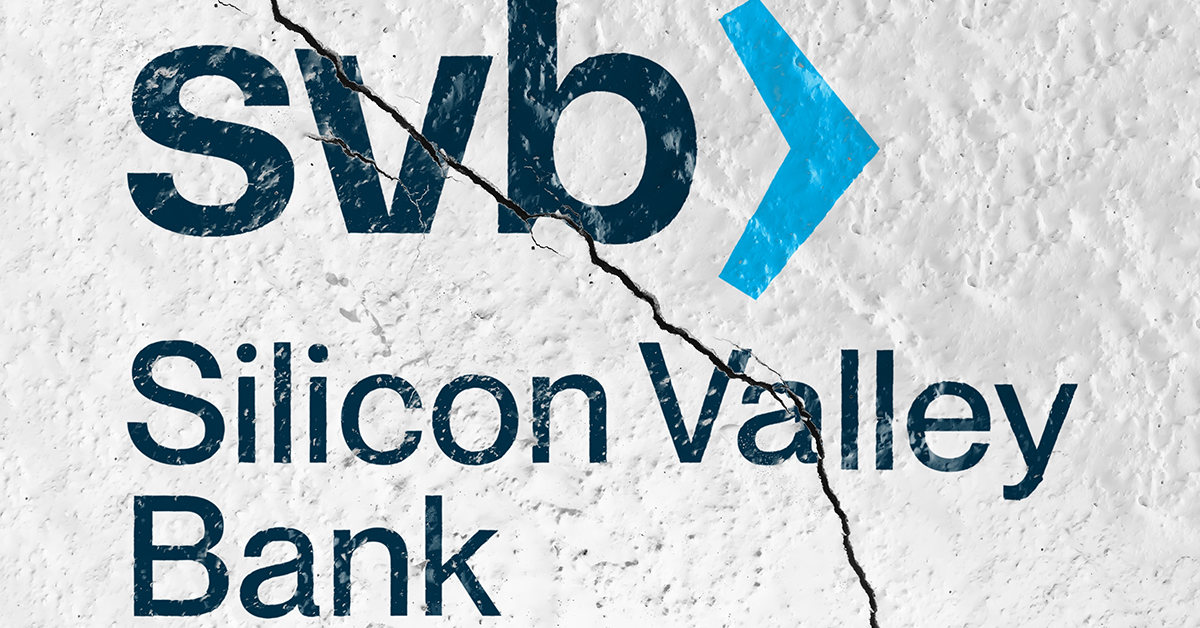The global pandemic pushed many shaky companies to the edge of bankruptcy, the energy crisis and steep rate hikes sealed their fate. But some of them will emerge stronger and more profitable as a result.

Asking where the largest companies in the world are located and where the biggest recent bankruptcies have taken place will give, quite unsurprisingly, the same answer. Due to Covid-19, the US economy suffered its most severe contraction in over a decade. Businesses from other countries with a large chunk of their operations in the US suffered equally. The energy crisis, the interest rate hikes and the war in Ukraine made a bad situation worse.
This ranking, compiled using figures by BankruptcyData—a database of case information for all the companies that file for insolvency in the 94 US bankruptcy courts—shows that a multi-dimensional crisis will hammer all types of firms and industries. Although some foreign companies file for bankruptcy in their home countries, the world’s most powerful firms tend to seek court protection in the US. Unlike most foreign insolvency systems where a liquidator is appointed, the US bankruptcy process allows management to retain control of the business while also preventing creditors from going after the distressed company’s assets.
Bankruptcy is a bitter pill to swallow and yet, in many cases, it is the only way for a company to kick start a new and more prosperous phase.
16) SILICON VALLEY BANK FINANCIAL GROUP
Country: United States
Liabilities: $3.67 billion
While this ranking has in the past included only 15 companies, it would be remiss to exclude the former parent firm of Silicon Valley Bank (SVB), the biggest bank to fail since Washington Mutual was shut down during the 2008 financial crisis.
On March 10, 2023, SVB collapsed after rumors of liquidity issues led to massive withdrawals from its customers the previous day. Fears of a contagion in the banking sector were partially born out by the subsequent collapse of Signature Bank and the acquisition of Credit Suisse by its rival UBS at a steep discount at the behest of government regulators.
It might be difficult to feel empathetic towards the venture capitalists and tech billionaires among SVB’s founders and customers. However, as the second largest bank unwinding handled by the FDIC, SVB was also the primary lender of many small startups, non-profit organizations, and ordinary people. Notably, actress Sharon Stone revealed that she had lost half of her money in what she called “this banking thing.” But don’t fret, federal regulators promised to make all depositors whole despite the $250,000 cap on FDIC insurance.
15) REVLON
Country: United States
Liabilities: $3.68 billion
Established in New York in 1932, Revlon sells makeup, fragrance and skincare products in more than 150 countries. When the pandemic hit, stores were shuttered by lockdowns, sales dropped more than 20%, and Revlon found it impossible to make its financials look pretty. While the cosmetics giant narrowly avoided bankruptcy at the time, last year it reached the breaking point as rising inflation led consumers to cut spending on non-essentials like beauty products. This left Revlon unable service its massive debts or pay suppliers.
But there is good news. Revlon has reportedly made headway in its reorganization efforts and is expected to exit Chapter 11 bankruptcy soon.
14) ALTERA INFRASTRUCTURE
Country: United Kingdom
Liabilities: $3.71 billion
Based in Scotland, Altera is a supplier of critical infrastructure assets to the oil and gas industry. Bankruptcies often boil down to a combination of rising debt and falling revenue, and Altera—which had taken on considerable obligations to fund its exploration activities—suffered with the plunge in oil prices that followed the pandemic-era’s restrictions on travel and transportation. Increasingly unable to address its debt, Altera sought Chapter 11 bankruptcy protection in August 2022 and re-emerged from bankruptcy in January 2023 buoyed by the rebound in energy prices following the Russian invasion of Ukraine.
13) AVAYA INC.
Country: United States
Liabilities: $5.13 billion
Avaya is a multinational tech company that specializes in communications services for businesses and government agencies. Established in 2000 when Lucent Technologies spun off its business telephone manufacturing operations, Avaya’s bankruptcy exemplifies the struggle faced by traditional hardware firms as they transition to software and cloud-based products. After previously filing for bankruptcy in 2017, Avaya was again forced to enter Chapter 11 proceedings in February of this year. As a publicly listed company, its shares plunged nearly 99% in 2022.
12) CELSIUS NETWORK
Country: United States
Liabilities: $5.5 billion
Did you hear? Cryptocurrencies are not so hot anymore. That, of course, has been said and disproved countless times since the inception of Bitcoin in 2007. Yet it was last year’s cryptocurrency price volatility that pushed Celsius into bankruptcy, freezing hundreds of thousands of customers out of their assets. The firm also failed to record about 7,000 inter-company transfers worth billions of dollars. To make matters worse, New York’s Attorney General filed a civil suit alleging that New Jersey-based Celsius—one of the largest crypto lenders in America—duped hundreds of thousands of investors into depositing billions of dollars in crypto-assets with the platform.
Currently, Celsius is trying to exit bankruptcy with a plan to return crypto assets to its customers (possibly) by June.
11) MIE HOLDINGS CORPORATION
Country: China
Liabilities: $5.77 billion
Much of what has been said about Altera Infrastructure is also true of this Hong Kong-based oil and gas exploration and production company. For several years now, MIE Holdings has been facing financial struggles as a result of mounting debt and diminishing oil prices. In February of last year, the company filed for Chapter 15 (which is ancillary to a primary proceeding typically brought in the debtor’s home country) but already by May a successful debt restructuring plan (“implemented by way of a Cayman Islands scheme of arrangement”) was announced. Has everything been solved? Perhaps. But recently the company stated that—because of ongoing audit procedures—it could not release consolidated financial statements for 2022, a worrisome signal.
10) AMERICANAS S.A.
Country: Brazil
Liabilities: $6.37 billion
Americanas is one of the largest brick-and-mortar and e-commerce retailers in Brazil and was backed by a group of billionaires that included the country’s richest man, Jorge Paulo Lemann. It offers a wide range of products including electronics, furniture and clothing.
Last January, Americanas was embroiled in one of Brazil’s biggest corporate scandals in recent memory. The company has been unable to address $3.8 billion worth of inconsistencies against total liabilities and assets—figures from BankruptcyData indicate—of more than $6.3 billion and $9.2 billion, respectively. Since filing for bankruptcy protection, the company became entangled in a bitter legal battle with its creditors and its stock price plummeted by almost 90%.
9) ENDO INTERNATIONAL
Country: Ireland
Liabilities: $9.53 billion
Endo International is a Dublin-based generic and branded pharmaceuticals company whose profits come almost entirely from the U.S. healthcare system. Faced with thousands of lawsuits alleging it fueled the opioid addiction crisis through the misleading promotion and sale of its pain medicines, last summer Endo International entered Chapter 11 bankruptcy proceedings to address its high debt load and resolve all legal claims. How many claims? More than 3,100 according to the filing.
8) OI S.A.
Country: Brazil
Liabilities: $9.82 billion
“Brazil’s Oi exits bankruptcy protection after more than 6 years,” read a Reuters headline for the telecom giant, the first landline and fourth mobile phone operator in the country, in December 2022. And this was another Reuters headline on March 2, 2023: “Brazil’s Oi files for second bankruptcy protection process.”
Faced with fierce competition, Oi took on a lot of debt to expand its network and acquire other businesses. Oi explained the new bankruptcy proceedings by citing rising interest rates in Brazil, declining landline clients, and the need to shield itself from creditors ahead of previously scheduled debt payments.
7) REVERSE MORTGAGE INVESTMENT TRUST INC.
Country: United States
Liabilities: $10.0 billion
With reverse mortgages, homeowners can tap into their home’s equity and live mortgage-free until they pass away; then their heirs can decide to either pay off the loan and keep the property or sell it. However, rising interest rates and insurance costs have disrupted the sector, leaving the fifth-largest reverse lender in the US unable to keep doing what it is supposed to do: lend money. Owing to the mounting challenges and the burden of debt, last November Reverse Mortgage Investment Trust filed for Chapter 11.

6) FTX TRADING LTD.
Country: United States
Liabilities: $10.00 billion
Sam Bankman-Fried, a Massachusetts Institute of Technology (MIT) graduate, founded FTX in 2018 and it rapidly grew into one of the largest cryptocurrency exchanges in the world. According to Forbes, his net worth peaked at over $26 billion, making him the 60th richest person in the world. Now he could face up to 115 years behind bars.
In November, concerns over the financial stability of the platform triggered a wave of customer withdrawals. The platform crashed, exposing a startling lack of liquidity and a broader pattern of mismanagement—millions of investors were unable to access their money. As for Bankman-Fried, the charges against him include securities fraud, wire fraud, money laundering and campaign finance law violations.
5) TALEN ENERGY SUPPLY
Country: United States
Liabilities: $10.0 billion
Talen, a subsidiary of Talen Energy Corp, is one of the largest independent power producers in the US. Its facilities generate power using a variety of fuels, ranging from coal and oil, to zero-carbon sources like nuclear to gas. It was mostly as a consequence of the spike in the price of natural gas—used in at least 8 of its 18 power plants—that in May of last year Talen was forced to file for Chapter 11. However, the company is in the process of completing its restructuring and is expected to emerge from bankruptcy in the second quarter of this year.
4) CINEWORLD GROUP
Country: United Kingdom
Liabilities: $10.38 billion
Amid a dearth of blockbuster movies and growing competition from online streaming platforms, theater chains have found it difficult to bounce back from the Covid-19 pandemic. London-based Cineworld purchased Regal Cinemas at the end of 2018, becoming the second-largest cinema chain globally. The timing could not have been worse: on March 16, 2020, Regal was forced to close all 543 of its theaters in the US due to the pandemic.
Ultimately, Cineworld filed for bankruptcy in September of last year as it struggled under the weight of nearly $5 billion in debt and twice as much in total liabilities according to BankruptcyData figures. But fear not: the shows will go on. Recently, the company has stated that a restructuring agreement with lenders will soon allow the chain to emerge from Chapter 11 bankruptcy.
3) MODERN LAND LTD.
Country: China
Liabilities: $10.65 billion
You might have heard of China Evergrande Group, the real estate giant that in 2021 sent shockwaves through the international financial markets by failing to make an $83.5 million interest payment on its total debt burden of $300 billion. Despite this, Evergrande repeatedly managed to avoid bankruptcy and just last March announced a long-awaited debt restructuring plan backed by a group of international creditors.
That, unfortunately, has not been the case for Modern Land, a Beijing-based Cayman Islands-registered property developer specializing in sustainable projects, which filed for Chapter 15 bankruptcy protection in April of last year after failing to refinance two bonds that came due. Modern Land is not as big as Evergrande and its financial troubles have made few headlines in or outside of China, but it is rather big. With nearly 200 projects in more than 50 cities and over $10 billion in both assets and liabilities, Modern Land is the third-largest bankruptcy globally in the past year.
2) GARUDA INDONESIA
Country: Indonesia
Liabilities: $13.38 billion
Like many airlines, State-owned Garuda faced enormous financial difficulties during the pandemic, when its income dropped by about 70%. At the end of 2021, Garuda reported a debt of $9.8 billion to hundreds of creditors. By January 2022, its debt level reached $13.8 Billion. The company tried to buy some time to resolve its debt without filing for bankruptcy but failed as of September of last year. Fortunately, the revitalization of the national flagship carrier remains a key objective for the Indonesian government to ensure connectivity, trade and tourism.
1) AIG FINANCIAL PRODUCTS CORP.
Country: United States
Liabilities: $37.70 billion
Founded in 1919, American International Group is a multinational finance and insurance corporation with a presence in more than 80 countries. In 2008, its Financial Products unit almost destroyed its parent company—and the entire global economy with it.
You might recall how the financial crisis unfolded: some of the biggest names in finance made bets on derivatives backed by subprime mortgages (as in made to borrowers with poor credit) and, when the borrowers defaulted, the value of these securities plummeted, dragging the institutions that booked these bets down with them. Long story short, the Federal Reserve intervened and bailed out AIG to the tune of $182.3 billion to prevent an even worse crisis.
AIG’s Financial Products division was virtually shut down shortly after, but it kept existing on paper with no employees of its own and just a small portfolio of financial products.
On December 12, 2022, the shutdown became official. With the parent firm taking a loss on the remaining $37 billion inter-company debt, the infamous AIGFP filed for Chapter 11 as the first step to permanently ceasing operations. Game over, at last? Maybe not: some of the unit’s former executives have moved to throw out the bankruptcy case. They claim that AIG is looking to avoid paying up to $640 million owed to them in wages, bonuses and other forms of compensation.



